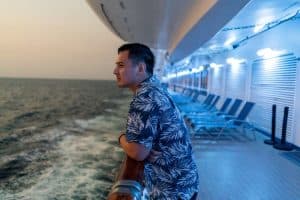Enduring Fascination
For twenty years, people have come to associate the Titanic disaster with its truly titanic box office film adaptation. Even so, James Cameron would never have been able to adapt this all-time cinematic juggernaut in the manner that he did if the story had not already remained popular and powerful within the public’s collective consciousness for more than a hundred years.
Which begs the question – just what is it about the Titanic that continues to capture our imagination?
The Allure of Tragedy
To begin with, it’s worth noting that tragedies simply have a certain allure that’s all their own. It’s part of the reason why Shakespearean tragedies have remained popular for four hundred years. Besides all the flowing poetry, romance, and literary brilliance, the raw tragic quality of Romeo and Juliet gives it a special kind of resonance.
The same holds true for real-world tragedies. The JFK Assassination has continued to confound, fascinate, and sadden us for more than half a century now, inspiring countless books and documentaries. The same may be said of the Hindenburg disaster, which has long outlived the age of the zeppelin to become a shorthand metaphor for disaster itself.
The Titanic disaster follows that same path, but on a larger scale. The ship itself was bigger, its interiors more famously opulent, its casualties greater – and so the tragedy itself feels grander. What’s more, even before the James Cameron film made Leonardo DiCaprio and Kate Winslet the Romeo and Juliet-esque fictional faces of the disaster, the Titanic’s story already had that all-too-human quality.
As with the ship’s ultimate fate, the forces which compelled the Titanic to become the disaster we know and remain in awe of today really were a perfect storm of different all-too-relatable components.
Intangibles and Trivia
While there was certainly nothing trivial about the disaster itself, there is no shortage of intriguing trivia about this doomed ship, its passengers, and the infamous circumstances which led to its sinking, including the following:
- Fans of the Boston Red Sox know that the ship sank in April of 1912 – the same week Fenway Park opened. While the BoSox have owned baseball for the past fifteen years, notching four World Series since 2004, for the 86 years that the team remained mired in its infamous World Series drought, that coincidence was one of many factors to give rise to the idea that it was “cursed.”
- The Titanic voyage also intersects with the stories of a couple of other Titanic-era doomed ships. For example, the SS Californian, a ship which, in the confusion surrounding the events, did not heed the Titanic’s distress call, was later sunk by a German submarine. What’s more, Alfred Gwynne Vanderbilt, a member of the rich and powerful Vanderbilt family, had a ticket for the voyage but did not attend – only to perish instead with the sinking of the RMS Lusitania.
- While the ship’s lack of lifeboats has become one of the most infamous parts of the disaster, the sixteen they had on board, along with four collapsible boats, were actually more than was legally required at the time.
- Both Milton S. Hershey – owner of the famous chocolate company – and Guillermo Marconi also held tickets for the launch but opted not to attend.
- The sinking is referenced in Downton Abbey, with the Countess of Grantham remarking on the survival of the real-life Titanic era Countess of Rothes Noel Leslie.
- Some testaments to the Titanic-era opulence that were on display on board included a gym, squash court, special kennel for dogs traveling first-class, thousands of bottles of wine, and a Grand Staircase which descended seven decks and was flanked by paintings and bronze cherubs.
- Aside from the sinking of the ship itself and the fictionalized romance of DiCaprio and Winslet’s Jack and Rose, perhaps the most famous single image to come from the Titanic disaster is that of the band continuing to play to the very end. The band continued to play for more than two hours after the iceberg hit. From this we get the phrase “And the Band Played On.”
The Conceit of Cultural Hubris
We have a natural tendency to both erect and then critique manifestations of our own humanly hubris. It’s part of the reason why disaster movies are so popular – there is something both terrifying and yet weirdly cathartic about seeing massive landmarks and skyscrapers, a testament to our ingenuity and skill, be destroyed by forces outside our control. Percy Shelley’s poem “Ozymandias” features none of the explosions or deaths of a disaster movie, and yet its central image – that of a monument to a once-great king laid waste by the irrevocable ravages of time – puts that hubris in perspective.
The Titanic fits in perfectly with that notion. It was the largest ship in the world at the time of its launch, a colossal 269 meters long. To fuel the ship, around 600 tons of coal a day was needed. The interior was famously lavish, inspired by the design scheme of the Ritz hotel and catering to the opulence and tastes of the ultra-elite. The ship was famously described as “unsinkable” – a declaration which, in retrospect, carries much of hubris-heavy weight of Ozymandias “Look on my works, ye Mighty, and despair!”
“Ozymandias” is not the only work linking the Titanic voyage and disaster to the world of literature. An 1898 book named The Wreck of the Titan: Or, Futility describes a massive opulent cruise liner sinking. Not only is the name and circumstance of the Titan’s sinking eerily similar to its real-world counterpart, its very title once more shines a light on the “futility” of man’s hubris, which is still how many largely view the Titanic voyage and disaster today.




